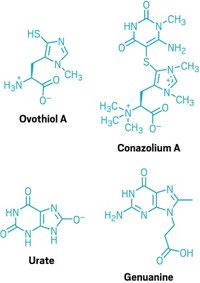Advertisement
Grab your lab coat. Let's get started
Welcome!
Welcome!
Create an account below to get 6 C&EN articles per month, receive newsletters and more - all free.
It seems this is your first time logging in online. Please enter the following information to continue.
As an ACS member you automatically get access to this site. All we need is few more details to create your reading experience.
Not you? Sign in with a different account.
Not you? Sign in with a different account.
ERROR 1
ERROR 1
ERROR 2
ERROR 2
ERROR 2
ERROR 2
ERROR 2
Password and Confirm password must match.
If you have an ACS member number, please enter it here so we can link this account to your membership. (optional)
ERROR 2
ACS values your privacy. By submitting your information, you are gaining access to C&EN and subscribing to our weekly newsletter. We use the information you provide to make your reading experience better, and we will never sell your data to third party members.
Environment
Sex-specific Compound Uncovered in Crabs
September 3, 2007
| A version of this story appeared in
Volume 85, Issue 36
Males and females of many types of animals and plants are known to possess differing levels of hormones and other metabolites, but a new finding marks the first discovery in any species that a particular metabolite occurs in only one sex (PLoS One, DOI: 10.1371/journal.pone.0000780). While using 31P NMR spectroscopy to study the gill tissue of blue crabs, Robert A. Kleps of the University of Illinois, Chicago, and colleagues noticed a signal produced by samples from male crabs that isn't produced by samples from female crabs. The researchers identified the responsible compound as 2-aminoethylphosphonic acid (AEP, shown). It was possible that diet or habitat differences could explain why AEP is exclusive to the male crabs. But tissue from the male half of an exotic half-male, half-female blue crab contained a significant amount of AEP, while the female half contained only traces, proving that diet and habitat are irrelevant. "Unless blue crabs are unique, sex-specific metabolites are likely to be present in other animals," Kleps says. He speculates that the presence or absence of certain metabolites might contribute to human gender differences affecting disease susceptibility or anatomy.





Join the conversation
Contact the reporter
Submit a Letter to the Editor for publication
Engage with us on Twitter